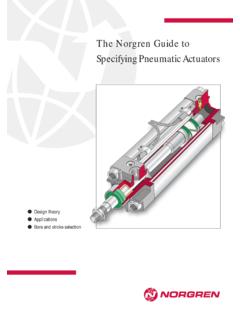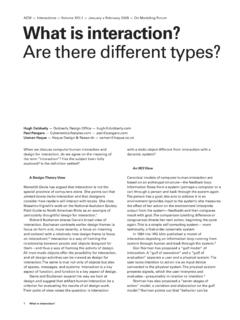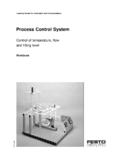Transcription of Voltage Feedback vs. Current Feedback Op Amps
1 November 1998 Mixed-Signal Products SLVA051 ApplicationReportVoltage Feedback Vs CurrentFeedback Op AmpsApplication ReportJames KarkiLiterature Number: SLVA051 November 1998 Printed on Recycled PaperIMPORTANT NOTICET exas Instruments and its subsidiaries (TI) reserve the right to make changes to their products or to discontinueany product or service without notice, and advise customers to obtain the latest version of relevant informationto verify, before placing orders, that information being relied on is Current and complete. All products are soldsubject to the terms and conditions of sale supplied at the time of order acknowledgment, including thosepertaining to warranty, patent infringement, and limitation of warrants performance of its products to the specifications applicable at the time of sale in accordance withTI s standard warranty.
2 Testing and other quality control techniques are utilized to the extent TI deems necessaryto support this warranty. Specific testing of all parameters of each device is not necessarily performed, exceptthose mandated by government are responsible for their applications using TI order to minimize risks associated with the customer s applications, adequate design and operatingsafeguards must be provided by the customer to minimize inherent or procedural assumes no liability for applications assistance or customer product design. TI does not warrant or representthat any license, either express or implied, is granted under any patent right, copyright, mask work right, or otherintellectual property right of TI covering or relating to any combination, machine, or process in which suchproducts or services might be or are used.
3 TI s publication of information regarding any third party s productsor services does not constitute TI s approval, license, warranty or endorsement of information in TI data books or data sheets is permissible only if reproduction is withoutalteration and is accompanied by all associated warranties, conditions, limitations and notices. Representationor reproduction of this information with alteration voids all warranties provided for an associated TI product orservice, is an unfair and deceptive business practice, and TI is not responsible nor liable for any such of TI s products or services with statements different from or beyond the parameters stated by TI forthat product or service voids all express and any implied warranties for the associated TI product or service,is an unfair and deceptive business practice, and TI is not responsible nor liable for any such see: Standard Terms and Conditions of Sale for Semiconductor Products.
4 Address:Texas InstrumentsPost Office Box 655303 Dallas, Texas 75265 Copyright 2001, Texas Instruments Incorporatediii Voltage Feedback vs. Current Feedback Op AmpsContents1 Introduction1.. 2 Ideal Models2.. 3 Ideal Models with Feedback3.. 4 Frequency Dependant Gain Model5.. 5 Feedback with Frequency Dependant Models7.. 6 Summary10.. Appendix A Derivation of ModelsA 1.. List of Figures1 Ideal Op Amp Model2.. 2 Noninverting Amplifier3.. 3 Frequency Model5.. 4 Feedback with Frequency Dependant Models7.. 5 Bode Plot9.. ivSLVA0511 Voltage Feedback Vs Current Feedback Op AmpsABSTRACTThis application report contrasts and compares the characteristics and capabilities ofvoltage and Current Feedback operational amplifiers.
5 The report also points out the manysimilarities between the two IntroductionThe Voltage Feedback (VF) operational amplifier (op amp) is the most commontype of op amp. The less well known Current Feedback (CF) op amp has beencommercially available for about 20 years, but many designers are still uncertainabout how to use them. Terminology is a confusing factor for many people. TheCF op amp is a transimpedance op amp and so has a different vocabularyassociated with it. This report attempts to show that there are more similaritiesthan differences between CF and VF op amps when considering basic Models2 SLVA0512 Ideal ModelsThe ideal VF op amp model is a powerful tool that aids in understanding basic VFop amp operation.
6 There is also an ideal model for the CF op amp. Figure 1 (a)shows the VF ideal model and Figure 1 (b) shows the CF ideal +VpVeVnVOieZt+Vpx1 VnieVO+ (a) VF Ideal Op Amp Model(b) CF Ideal Op Amp ModelFigure 1. Ideal Op Amp ModelIn a VF op amp,Vo+a Ve(1)where Ve = Vp Vn is called the error Voltage and a is the open loop Voltage gainof the a CF op amp,Vo+ie Zt(2)where ie is called the error Current and Zt is the open loop transimpedance gainof the amplifier. An amplifier where the output is a Voltage that depends on theinput Current is called a transimpedance amplifier because the transfer functionequates to an impedance , Voie+ Models with Feedback3 Voltage Feedback Vs Current Feedback Op Amps3 Ideal Models with FeedbackApplying negative Feedback around the ideal models, as shown in Figure 2 (a)and Figure 2 (b), results in noninverting amplifiers.
7 In a VF op amp, when negativefeedback is applied, the action of the op amp is to drive the error Voltage to zero;thus the name Voltage Feedback . In a CF op amp, when negative Feedback isapplied, the action of the op amp is to drive the error Current to zero; thus the namecurrent +VpVeVnVOieZt+Vpx1 VnieVO+ (a) VF Ideal Noninverting Amp(b) CF Ideal Noninverting AmpR2R1Vi+ R2R1Vi+ Figure 2. Noninverting AmplifierFor each circuit, solving for Vo in relation to Vi gives the transfer function of thecircuit. In the VF circuit, Equation 1 still holds true so that,Vo = a Ve whereVe = Vp Vn. Now Vp = Vi and Vn+VoR1R1)R2. Substituting and solving forVoVi;VoVi+ a1)a R1R1)R2 + R1)R2R1 11) 1a R1)R2R1 + 1b 11) 1ab (3)where b+ R1R1)R2 In the CF circuit, Equation 2 still holds true so that, Vo = ie Zt ie+VoZt.
8 Also,Vn = Vp= Vi. Summing currents at node Vn, ( ie)) VnR1 ) Vn VoR2 + and solving forVoVi;VoVi+ R1)R2R1 11) R2Zt + 1b 11) R2Zt where b+ R1R1)R2 (4)Ideal Models with Feedback4 SLVA051In either circuit (VF or CF noninverting amplifier), it is desired to set the gain bythe ratio of R1 to R2. The second term on the right hand side of Equations 3 and4 is seen as an error term. In the VF case, if ab is large (ideally equal to infinity),then the error is negligible. In the CF case, if Zt is large (ideally equal to infinity)in comparison to R2, then the error is the ideal behavior of VF and CF amplifiers shows very little Dependant Gain Model5 Voltage Feedback Vs Current Feedback Op Amps4 Frequency Dependant Gain ModelThe open loop gain, a for VF or Zt for CF, is frequency dependant in real op Figure 3, components are added to the ideal models (of Figure 1), which modelthe dominant bandwidth limitations.
9 See Appendix A for the derivation of +gmRcCcx1 VCVOVeVpVni = Ve gmZcRtCcx1 VCVOieVpVnZtiex1(a) VF(b) CFFigure 3. Frequency ModelTo solve the input to output transfer function is the same as the VF op amp:(5)Rearranging and substitutingRc Cc+Rc1)j2pfRcCcVo+Vc+i Zc+Ve gm Rc Cc .(6)This is the same as Equation 1 witha+gm Rc1)j2pfRcCc .VoVe+gm Rc1)j2pfRcCc .The term gm Rc1)j2pfRcCc is the open loop gain of the op amp, usuallydenoted as a(f) in the literature. The VF op amp s open loop gain has a dcresponse, a break frequency, and a 20dB/dec roll-off. At low frequencies,2pfRcCc 1, and VoVe ^gm Rc, which is extremely high at dc. Asfrequency increases, eventually 2pfRcCc+1, and VoVe +(gm Rc) 12.
10 This is the dominant pole frequency, fD. At frequencies above fD, Cc begins todominate the response so that VoVe ^gm2pfCc, and the gain rolls off at 20dB/dec. Cc is usually chosen so that the amplification falls to unity [noted asFu in Figure 5(a)] before upper frequency poles cause excessive phase Dependant Gain Model6 SLVA051 For the CF op amp:(7)Rearranging and substitutingRc Cc+Rc1)j2pfRtCcVo+Vc+ie Zt+ie Rc Cc .This is the same as Equation 2 withZt+ Rt1)j2pfRtCc Voie+ Rt1)j2pfRtCc .The term Zt+Rt1)j2pfRtCc is the open loop gain of the op amp, which isfrequency dependent, and is more properly denoted Zt(f). The CF op amp s openloop gain has a dc response, a break frequency, and a 20dB/dec roll off.















